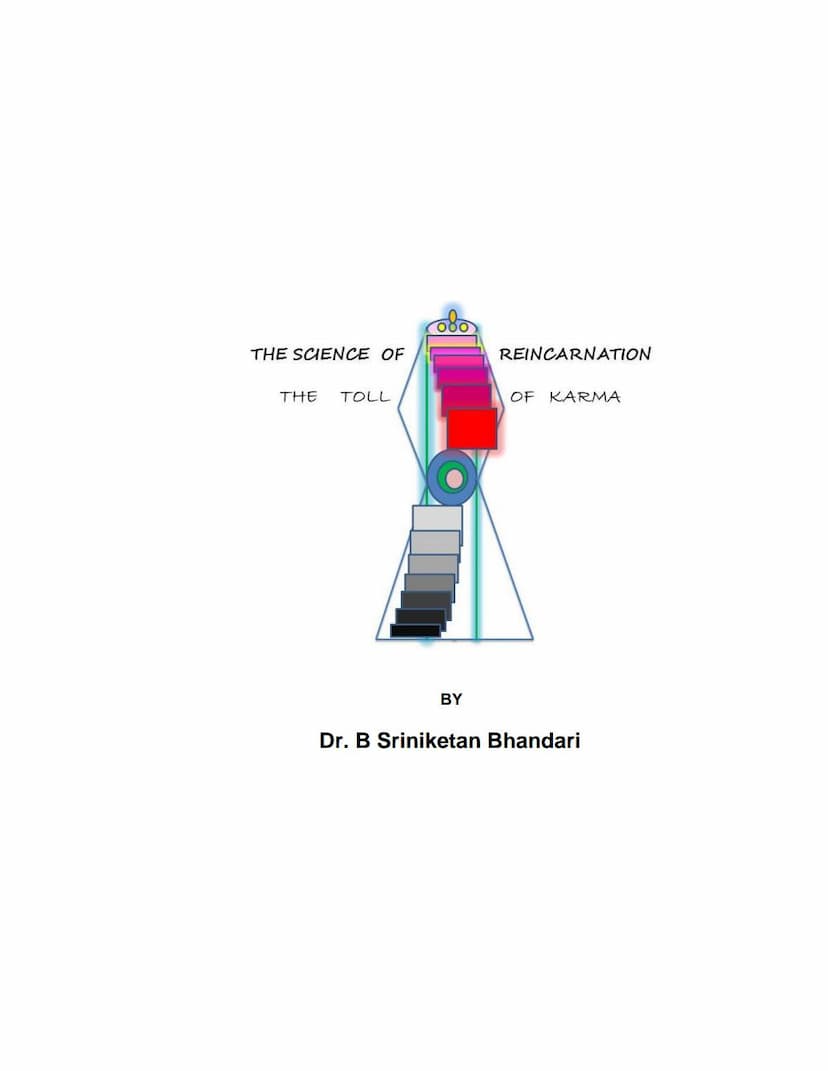Science Of Reincarnation Toll Of Karma
Added to library: September 2, 2025

Summary
This book, "The Science of Reincarnation: The Toll of Karma" by Dr. B. Sriniketan Bhandari, delves into the Jain understanding of karma and reincarnation, attempting to bridge these spiritual concepts with scientific analogies.
Author's Background and Motivation:
Dr. Bhandari, with a strong background in chemistry, chemical technology, and biochemistry, also has a deep association with astrology and Jain philosophy. His scientific curiosity, coupled with his Jain upbringing, led him to explore the profound questions of life's purpose, the reasons behind life's inequalities, and how our actions shape our destiny. He found that the principles of karma offered explanations that modern science, with its current limitations, could not provide for many of life's seemingly inexplicable events.
Core Concepts Explained:
The book aims to answer fundamental questions such as "Why am I here?" and "How do our actions shape our lives and future lives?" It posits that understanding the law of karma, the universal law of actions, is key to answering these questions. The book highlights that:
- Karma is Action: Every action, whether mental, verbal, or physical, creates consequences that shape our lives and future existences.
- The Cycle of Reincarnation: These actions lead to an endless cycle of birth, death, pleasure, and pain.
- Origin of Karma: The book explains the fundamental cause of karma and how it gives rise to eight major families of karma that influence our physical and spiritual activities.
- Pollution of the Soul: Karma is described as polluting the soul ('Atma'), obscuring its inherent omnipotent powers and leading to servitude. This pollution is likened to industrial pollution affecting the Earth's atmosphere.
- Mechanisms of Reincarnation: The book details the processes and mechanisms through which reincarnation occurs.
- Freedom from Karma: It offers simple methods, rooted in Jain principles, to break free from the grip of karma, leading to enlightenment, freedom, Moksha, Nirvana, or liberation.
Scientific Analogies and Examples:
Dr. Bhandari frequently uses scientific analogies to make complex Jain concepts more accessible:
- Photographic Film: Karma is compared to the impression left on a photographic film, where actions are the light, and the soul ('Atma') is the film. The subsequent birth is like the developing and printing of the photograph.
- Chemical Reactions: Various chemical reactions are used to illustrate how actions create lasting bonds with the soul (e.g., nitrogen and hydrogen forming ammonia) and how certain conditions can alter or break these bonds.
- Gene Regulation and Hormones: The concept of genes being regulated by hormones is used to explain how karma and desires influence the soul's actions and spiritual development.
- Pollution: The pollution of the Earth's atmosphere by toxic gases is paralleled with the soul being polluted by karmic particles.
- Water Dissolving: The dissolving of sugar in cold versus hot water illustrates how natural versus unnatural causes can accelerate or decelerate the fruition of karma, akin to the concept of 'Udirna'.
- Magnets and Barriers: The analogy of a magnet's effectiveness being reduced by a barrier like wood explains how certain actions or states can mitigate the impact of karma.
- Blind Men and the Elephant: This classic parable is used to illustrate the Jain principle of 'Anekantvad' (multiplicity of viewpoints), suggesting that truth is relative and can only be understood by combining different perspectives.
Key Jain Principles Discussed:
The book elaborates on the core principles of Jainism that guide one towards liberation:
- Eight Types of Karma: The book details the eight major categories of karma:
- Gyana Varna: Inhibits consciousness and knowledge.
- Darshna Varna: Blocks self-realization and the five senses.
- Vedniya: Associated with pleasure and pain.
- Mohniya: Causes attachment and delusion (divided into Darshan Mohniya and Charitrya Mohniya).
- Ayu Karma: Determines the span of life.
- Nam Karma: Directs the species and physical body for reincarnation.
- Gotra Karma: Controls birth in a specific family and environment.
- Antraya Karma: Blocks prosperity and fame.
- The Five Great Vows (Pancha Mahavratas): The book emphasizes the importance of:
- Ahimsa (Non-violence): Applied to all living beings in thought, word, and deed.
- Sutra (Truthfulness): Speaking the truth.
- Asteya (Non-stealing): Not taking what is not given.
- Aprigraha (Non-possession/Non-attachment): Minimizing worldly possessions and attachments.
- Brahmacharya (Celibacy/Chastity): Added by Lord Mahaveer.
- The Three Jewels (Triratna): Right Knowledge (Samyak Gyan), Right Faith (Samyak Darshan), and Right Conduct (Samyak Charitra) are presented as the path to break karmic bonds.
- Seven Principles of Jainism: The book outlines seven fundamental principles: Jiv (Soul), Ajiv (Non-soul/Matter), Asrav (Inflow of Karma), Bandh (Bondage of Karma), Samvar (Stoppage of Karma inflow), Nirjar (Weakening of Karma bonds), and Moksha (Liberation).
The Goal: Moksha/Nirvana:
The ultimate goal described is Moksha or Nirvana – freedom from the cycle of birth and death, achieving absolute happiness, unlimited knowledge, and infinite power. This is achieved by purifying the soul from all karmic particles.
In essence, "The Science of Reincarnation: The Toll of Karma" presents a comprehensive Jain perspective on the workings of karma and reincarnation, aiming to provide readers with a framework to understand life's complexities and a path towards spiritual liberation through ethical conduct and self-discipline.